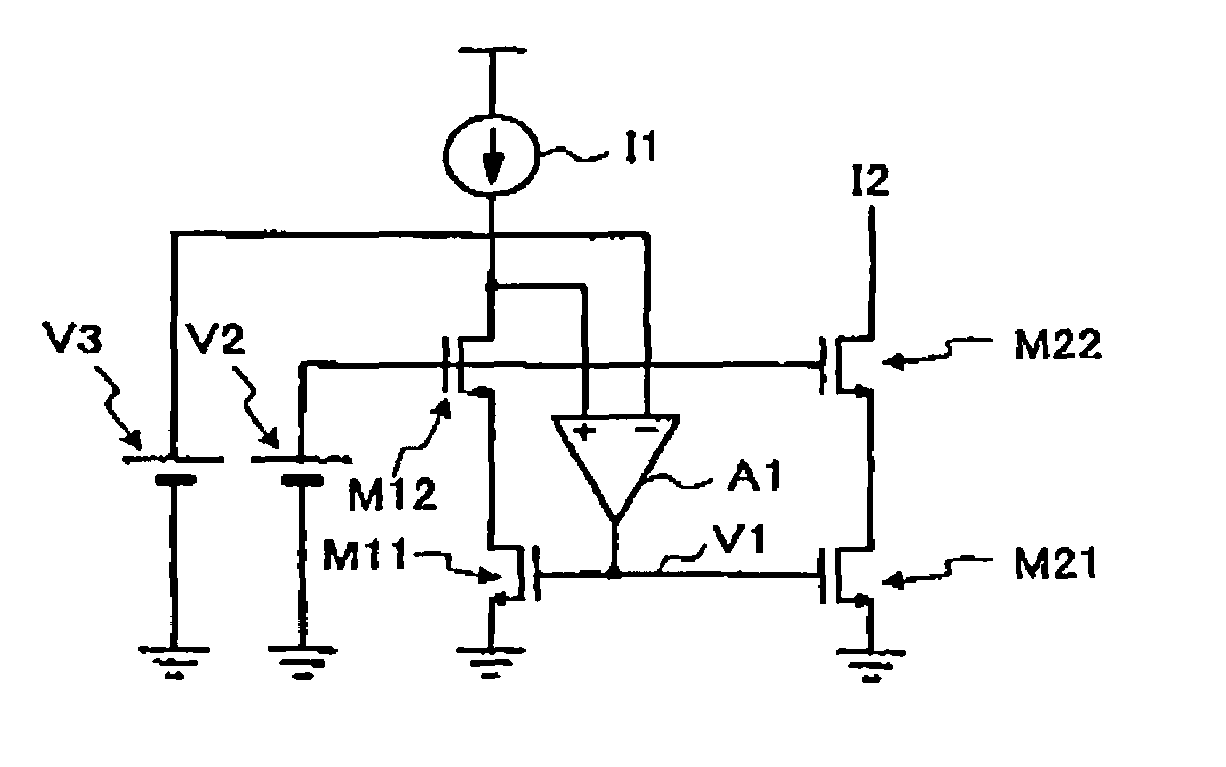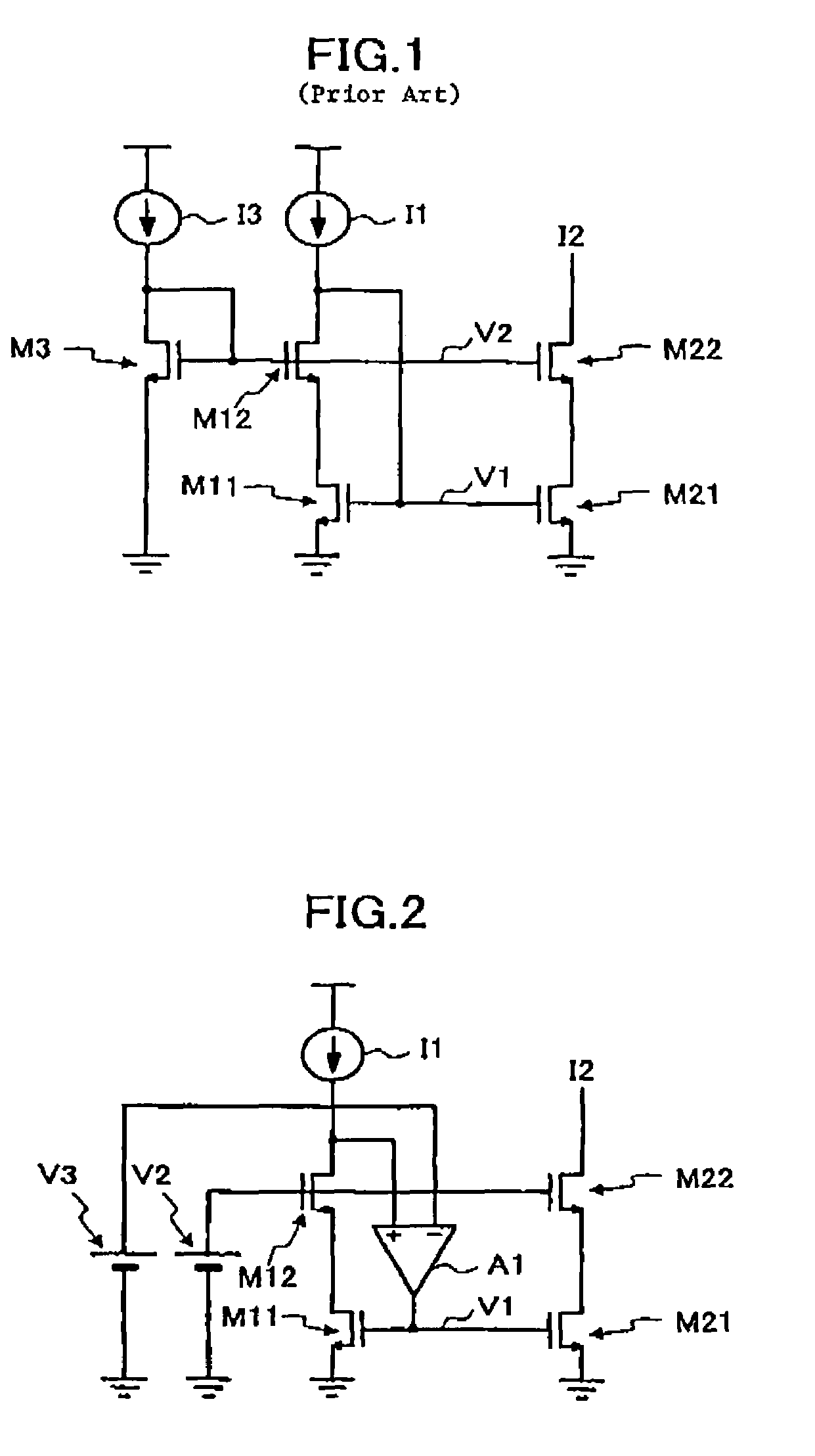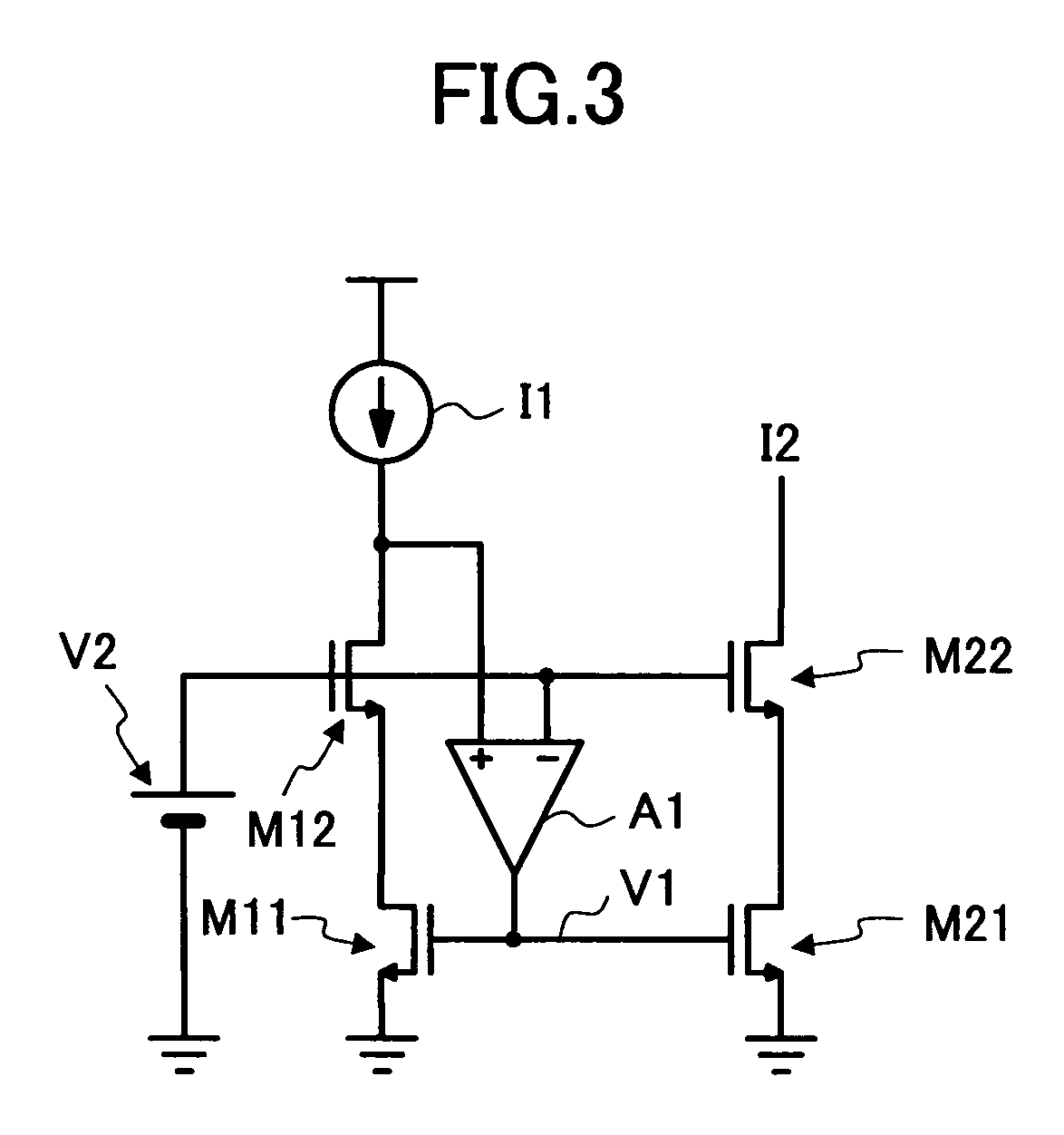Cascode current mirror circuit operable at high speed
a current mirror circuit and current current technology, applied in the direction of instruments, amplifiers with semiconductor devices only, etc., can solve the problems of inability to design circuits that are faster than the speed of the transistor mb>22/b>, and limitations of the frequency response characteristics of the transistor
- Summary
- Abstract
- Description
- Claims
- Application Information
AI Technical Summary
Benefits of technology
Problems solved by technology
Method used
Image
Examples
first embodiment
[0035]FIG. 2 is a circuit diagram showing an example of the construction of a cascode current mirror circuit according to the present invention. The cascode current mirror circuit of FIG. 2 includes a current source I1, a bias-voltage generating circuit V2, a bias-voltage generating circuit V3, NMOS transistors M11, M12, M21, and M22, and a differential amplifier A1. The output node of the differential amplifier A1 is connected to the gate node of the transistor M11, which is a source-grounded stage of the current mirror. The non-inverted input node of the differential amplifier A1 is connected to the drain of the transistor M12 which is a cascode stage. The inverted input node receives a bias voltage V3, which is necessary to make the transistor M12 at the cascode stage operate in the saturation region.
[0036]The transistors M11 and M21 have their gates connected to each other to make up a current mirror circuit. The transistors M12 and M22 also have their gates connected to each ot...
second embodiment
[0057]FIG. 6 is a circuit diagram showing an example of the construction of the cascode current mirror circuit according to the present invention. In FIG. 6, the same elements as those of FIG. 2 are referred to by the same numerals.
[0058]The cascode current mirror circuit of FIG. 6 includes the current source I1, the bias-voltage generating circuit V2, the NMOS transistors M11, M12, M21, and M22, and a current-controlled current source F1. The current-controlled current source F1 controls the amount of an electric current on the output side such that the current flowing on the output side (i.e., the side connected to the current source I1) is responsive (i.e., equal to or proportional to) the current flowing on the input side (i.e., the side connected to the drain node of the transistor M12). The current on the input side and the current on the output side may be proportional to each other with a positive proportion factor, or may be proportional to each other with a negative propor...
third embodiment
[0066]FIG. 8 is a circuit diagram showing an example of the construction of the cascode current mirror circuit according to the present invention. In FIG. 8, the same elements as those of FIG. 2 are referred to by the same numerals.
[0067]The cascode current mirror circuit of FIG. 8 includes the current source I1, the bias-voltage generating circuit V2, the NMOS transistors M11, M12, M21, and M22, and a shift-voltage generating circuit V4. The shift-voltage generating circuit V4 has its minus side connected to the gate node of the transistor M11 and its plus side connected to the drain node of the transistor M12. With this provision, a potential made by subtracting a predetermined shift voltage from the drain-node potential of the transistor M12 appears at the gate node of the transistor M11.
[0068]The transistors M11 and M21 have their gates connected to each other to make up a current mirror circuit. The transistors M12 and M22 also have their gates connected to each other to make u...
PUM
 Login to View More
Login to View More Abstract
Description
Claims
Application Information
 Login to View More
Login to View More - R&D
- Intellectual Property
- Life Sciences
- Materials
- Tech Scout
- Unparalleled Data Quality
- Higher Quality Content
- 60% Fewer Hallucinations
Browse by: Latest US Patents, China's latest patents, Technical Efficacy Thesaurus, Application Domain, Technology Topic, Popular Technical Reports.
© 2025 PatSnap. All rights reserved.Legal|Privacy policy|Modern Slavery Act Transparency Statement|Sitemap|About US| Contact US: help@patsnap.com



